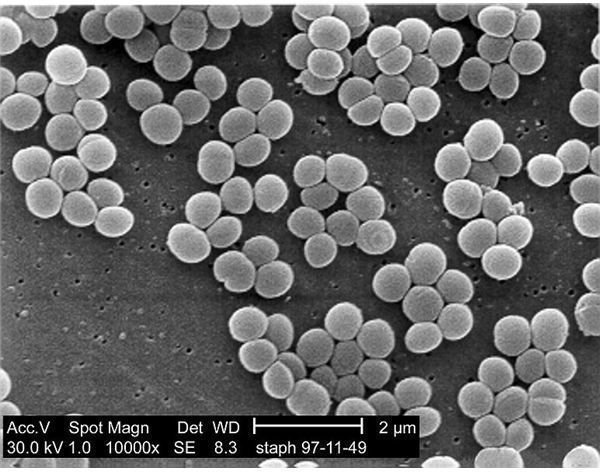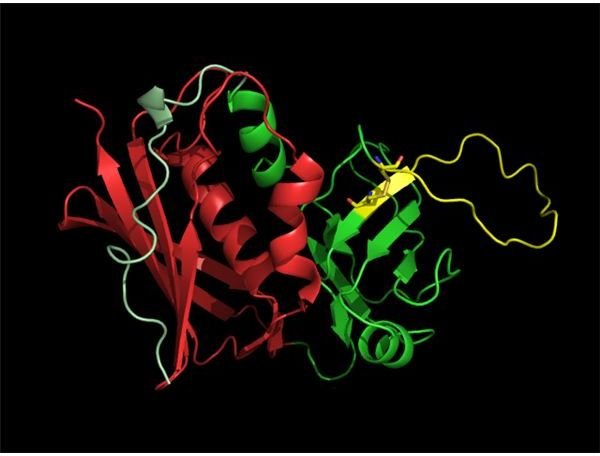What is Staphylococcus Aureus? - The Baceria that Causes Staph Infection Symptoms and Toxic Shock Syndrome
Staphylococcus aureus is a bacterium that affects the skin of humans and other animals. Most commonly, it takes the form of a staph infection. According to physicians an estimated 20 percent of the human population carry staph bacteria. Infections do not always occur; many people can happily co-exist with the staph bacterium. However, it is believed that half a million patients are infected each year in American hospitals alone. Staphylococcus aureus was discovered in 1880 by a Scottish surgeon named Alexander Ogston.
Characteristics of Staphylococcus

Staphylococcus aureus is a facultative anaerobic organism. This means that it makes the nucleotide ATP through the process of respiration. It also has the capability to switch to fermentation in which it develops energy from the oxidation of organic matter.
The bacterium also contains the enzyme catalase. This allows staphylococcus aureus to convert hydrogen peroxide to water and oxygen.
Staphylococcus aureus is most commonly found in grape-like clusters that appear as golden-yellow colonies.
Role in Disease

Staphylococcus aureus most commonly attacks human skin. It survives for extended periods of time on dry surfaces as well as on various animals such as dogs and cats. The bacteria is most easily transmitted from person to person through skin contact, causing a staph infection. When an individual is infected, pus will develop that can be passed to clothing and athletic equipment. Staphylococcus aureus most frequently impacts the nose and throat in the form of toxic shock syndrome, however, this does not necessarily denote infection.
One of the characteristics of staphylococcus aureus is its susceptibility to a variety of phages. These are viruses that will infect bacteria and can lead to more dangerous infections. The most common example of this is Panton-Valentine leukocidin; a cytotoxin that infects a person’s pores, leading to lesions that will hemorrhage the membrane of cells.
Virulence Factors

Staphylococcus aureus secretes a number of different toxins, each producing different effects on an individual. These different effects are noted as specific diseases. Pyrogenic toxin superantigens are responsible for both toxic shock syndrome and food poisoning. This is the toxin that is associated with the prolonged use of tampons.
Infants and small children can be at risk of a disease called Ritter’s disease. Caused by exfoliative toxins, this disease is notable for fluid-filled blisters. Staphylococcus aureus also commonly causes pneumonia in children due to bi-component toxins.
The other notable virulence factor associated with the bacteria is a carotenoid pigment. Its antioxidant properties prevent the infection from being neutralized by oxidizing chemicals such as hydrogen peroxide. A variety of tests have shown that this helps staphylococcus aureus to survive longer in different conditions.
Image Sources
Staphylococcus aureus. (Supplied by Agricultural Research Service; Public Domain; https://upload.wikimedia.org/wikipedia/commons/6/68/Staphylococcus_aureus%2C_50%2C000x%2C_USDA%2C_ARS%2C_EMU.jpg)
Staphylococcus aureus cluster. (Supplied by the Centers for Disease Control and Prevention; Public Domain; https://upload.wikimedia.org/wikipedia/commons/5/57/Staphylococcus_aureus_01.jpg)
Phage. (Supplied by GrahamColm at Wikimedia Commons; GNU Free Documentation License; Creative Commons Attribution ShareAlike 3.0 License; https://upload.wikimedia.org/wikipedia/en/b/b0/Phage.png)
Superantigen. (Supplied by Bassophile at Wikimedia Commons; GNU Free Documentation License; https://upload.wikimedia.org/wikipedia/en/f/f1/Seb.png)
This post is part of the series: Most Dangerous Bacteria
The genetics of the most dangerous bacteria are complicated. Some examples of these include Clostridium botulinum, staphylococcus aereus, and E. Coli. Staph infection symptoms, symptoms of botulism and ecoli bacteria can be harmful, despite the use of botulinum in Botox.
